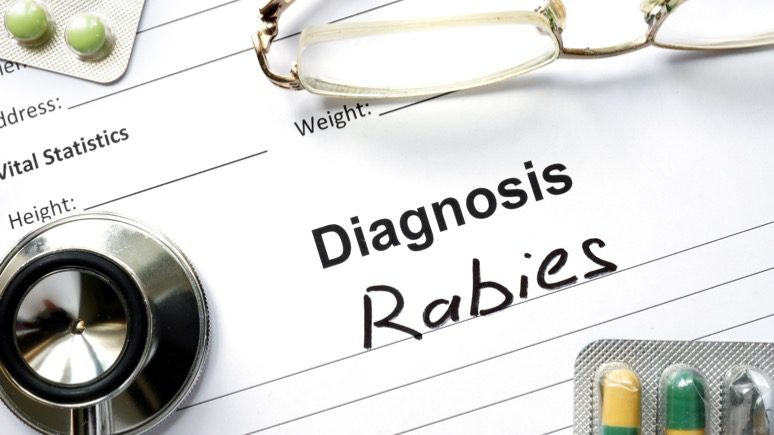Signs and symptoms of rabies in humans
Signs and symptoms of rabies in humans can develop as quickly as the first seven days of the infection. Rabies’ early signs and symptoms include fever, weakness, and headaches. Without a background of exposure to rabid animals, these symptoms would not raise the suspicion of rabies. They are fundamentally the same as ordinary influenza or other viral disorders.
The sickness can take on one of two forms. With paralytic rabies (roughly 20% of cases), the patient’s muscles gradually get paralyzed (usually beginning at the site of the bite). It is the less common form of rabies and ends in either a coma or death. With furious rabies (around 80% of cases), the patient displays the usual signs and symptoms of rabies, such as:
- nervousness and disarray (the patient is regularly hyperactive)
- encephalitis, causing mind illusions, confusions, and a trance state
- hypersalivation
- hydrophobia (fear of water and avoidance of it)
- has trouble gulping
Once the clinical symptoms of rabies happen, the sickness is almost always lethal.
The first signs and symptoms of rabies that appear may be similar to the flu. They may persist for several days and include:
- Headache
- Fever
- Nausea and vomiting
- Anxiety
- Agitation
- Confusion
- Hyperactivity
- Difficulty swallowing, which leads to fear of water
- Excessive salivation (due to difficulty swallowing)
- Insomnia
- Hallucinations
- Partial paralysis
When to see a doctor
Seek immediate medical attention if you are bitten by any animal. Depending on the injury and the situation, it will be determined if you need treatment to prevent symptoms of rabies. If you think you may have been bitten, but aren’t sure, seek medical care.
Regardless if you aren’t sure whether you’ve been bitten or scratched, you should still look for medical attention. For example, if a bat flies into your room while you’re sleeping, it may bite you without waking you up. However, if you woke up to see a bat inside your room, it would be best to assume that the bat had bitten you. Just like this case, if you see a bat near an individual who can’t report a bit, for example, a little kid or a disabled person, you must assume that they have been bitten as well.
Rabies in humans diagnosis
If an animal bites a person, it is impossible to determine whether a virus was transmitted. Therefore, if the doctor believes there is a chance a person has been exposed to rabies, the specialist will prescribe treatment to prevent rabies symptoms from developing.
It is possible to determine the presence of the virus in an animal by identifying the rabies infection in any affected area of the brain. However, it requires euthanization of the animal. Testing a speculated animal will help avoid extensive testing of the person who came in contact (if the test is negative) and unnecessary medications.
In people, analysis for rabies symptoms includes testing saliva, blood, spinal liquids, and skin tests. Various tests might be necessary to diagnose rabies in humans. The choice of tests depends on the proteins identified on the surface of the virus, the location of its hereditary material, or the patient’s immune reaction to the infection.
Here are some of the tests that can confirm symptoms of rabies infection:
- Direct fluorescent antibody test– The dFA test depends on the assumption that infected animals have rabies virus proteins (antigens) in their tissues. Since rabies locates in the nervous tissue (and not blood like numerous other infections), the brain is the perfect material to test for rabies antigens. The fundamental element of a dFA test is the fluorescently-labeled anti-rabies agents. If the marked antibody is incubated with rabies-infected brain tissue, it will bind to rabies antigen. Unbound antibodies can be washed away. Areas, where the antigen is available, can be pictured as fluorescent-apple-green zones using a fluorescence magnifying lens. If rabies infection is not present, there will be no coloring.
- Histologic examination– Histologic examination of autopsy or biopsy tissues can occasionally provide useful information for diagnosing unsuspected instances of rabies that have not been tested by conventional methods. When brain tissue from a rabies-infected animal is stained with a histologic stain, an experienced microscopist might be able to detect signs of encephalomyelitis. However, the strategy isn’t specific and isn’t considered diagnostic for rabies.
- Immunohistochemistry (IHC)– IHC techniques for rabies diagnosis give sensitive and specific means to distinguish rabies in formalin-fixed tissues. These strategies are more delicate than histologic recoloring techniques, for example, H&E and Sellers stains. These methodologies use antibodies to identify rabies infection inclusions similarly to the DFA test. The procedures use enzyme-labeling systems that expand sensitivity. Likewise, monoclonal antibodies might be utilized to recognize rabies infection variations.
Click Here to read about Treatment.
















Leave a Reply
You must be logged in to post a comment.